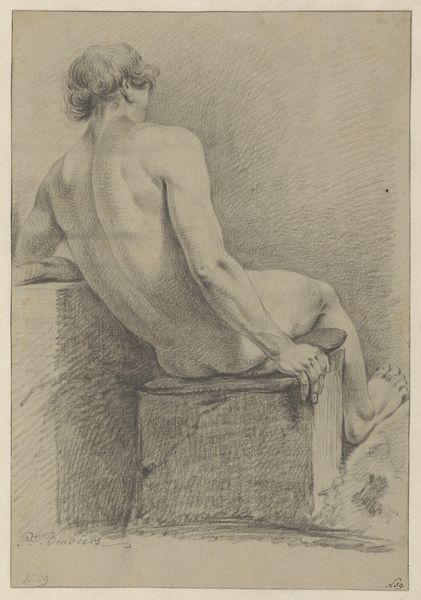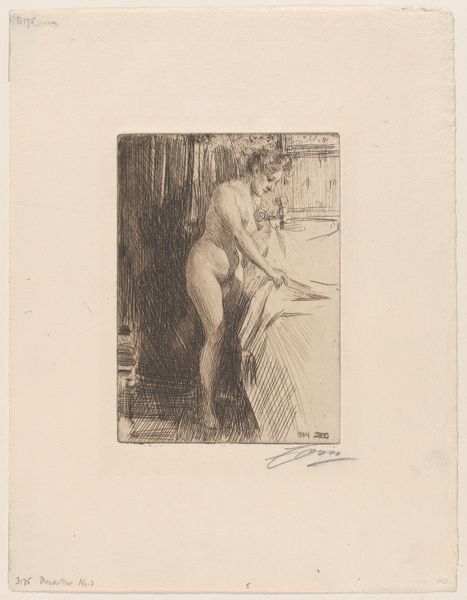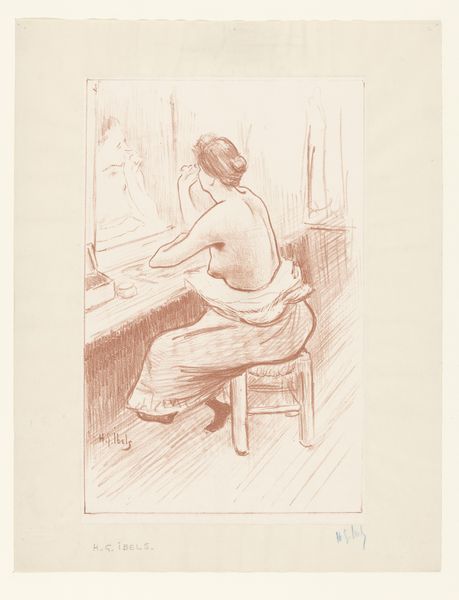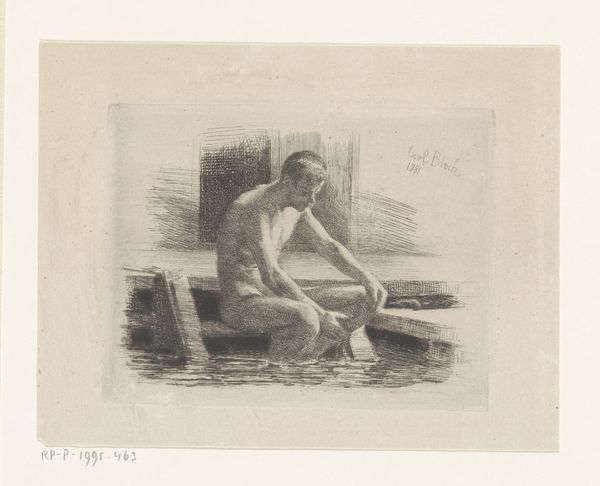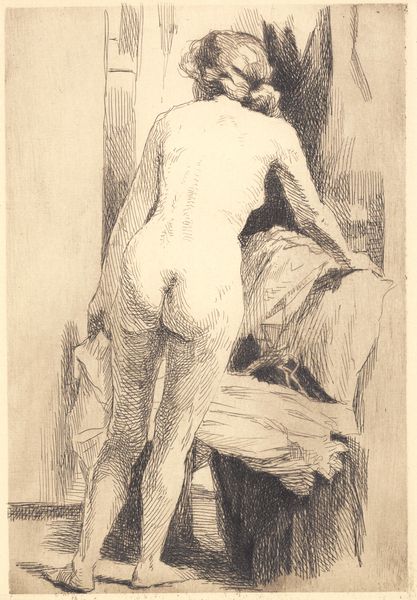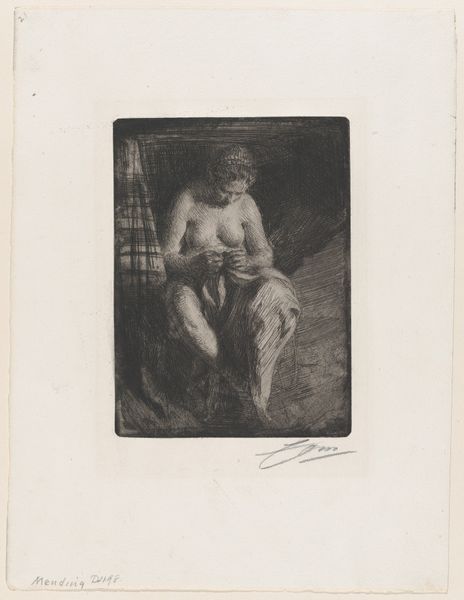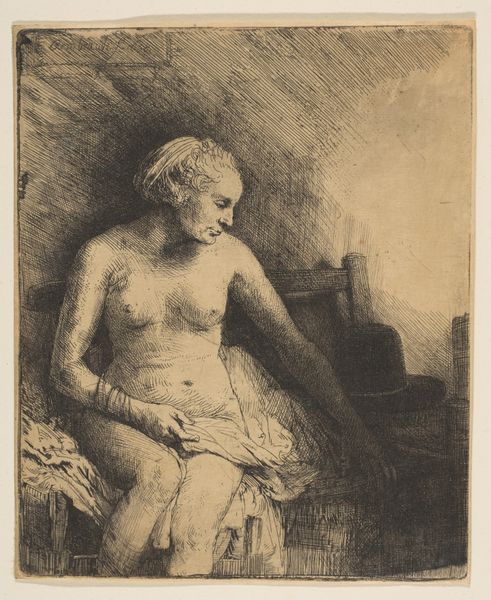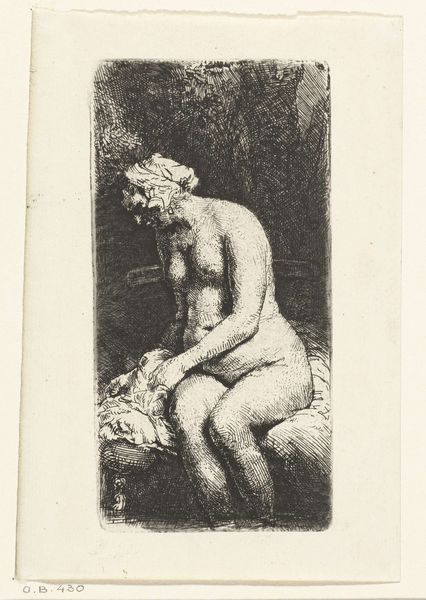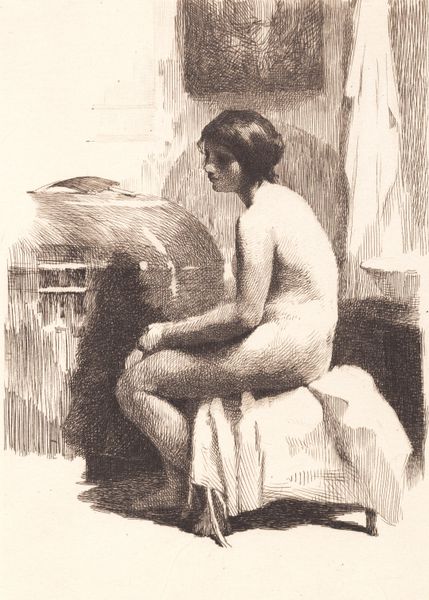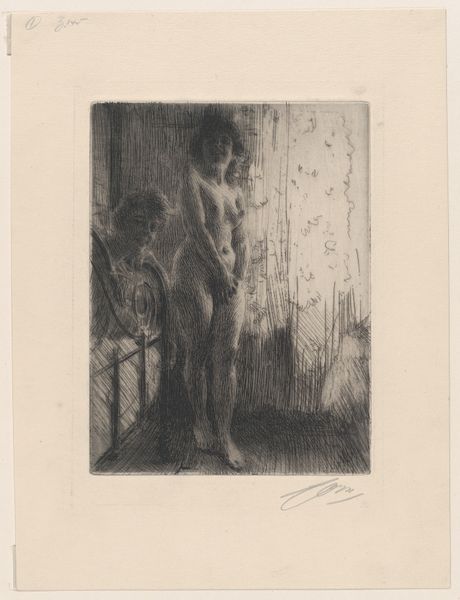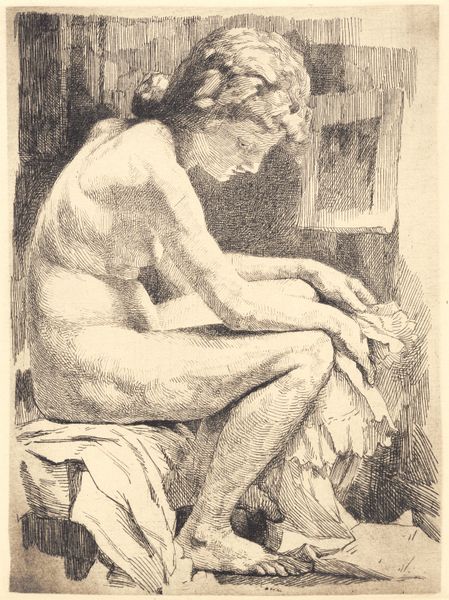
drawing, print, etching, intaglio
#
portrait
#
pencil drawn
#
drawing
# print
#
etching
#
intaglio
#
charcoal drawing
#
figuration
#
pencil drawing
#
portrait drawing
#
nude
Dimensions: 200 mm (height) x 139 mm (width) (plademaal)
Curator: The delicate linework of Frans Schwartz really shines through in this intaglio print, likely created between 1865 and 1917, titled "Nøgen kvindelig model, siddende i et værelse," or "Nude female model, sitting in a room." Editor: Immediately, I’m struck by the tension. There’s this almost photorealistic rendering of the figure juxtaposed with a sketchier background. It gives her this isolated, dreamlike quality. Curator: Right, that stark contrast likely speaks to the art world at the time. Figuration was a dominant theme, but there was a growing movement toward representing subjects in more ambiguous settings. How much context to provide the viewer was very much up for debate. Editor: And the artist uses the etching technique to superb effect. The hatching and cross-hatching create a beautiful range of tones, from the light reflecting off her skin to the deep shadows of the room. Notice how her body is rendered with smooth lines compared to the fabric underneath her? Curator: I see her posture as representative of changing societal views towards female representation, particularly in Denmark. The subtle eroticism isn't aggressive, but it still provokes a conversation. This piece resides in the collection of the SMK – Statens Museum for Kunst, and prints like this were very accessible to a wide audience at the time. This brings art, previously locked away, into middle class homes, challenging established norms. Editor: Absolutely. The formal qualities contribute to that challenge too. It avoids classical idealization; we see a real, somewhat ordinary body. There’s even a slight awkwardness in her pose. It's beautiful because of, not in spite of, that. The varying texture, I’d add, highlights the different materials - from skin, to fabric to paper Curator: I agree. Schwartz wasn't necessarily making grand political statements, but his art choices inevitably reflect broader societal shifts and open a window into how these models were perceived and consumed during this era. It's a quietly subversive piece. Editor: Yes, precisely. The beauty of a piece like this is how it balances on the edge, its very existence challenging the expected codes. That delicate, considered visual structure brings this radical proposition forward.
Comments
No comments
Be the first to comment and join the conversation on the ultimate creative platform.
